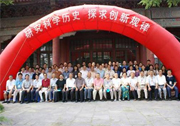| 英文摘要: |
Since the 1550s, a new type of muzzle-loading, bronze or cast-iron cannon called fagong (发熕) appeared in the siege warfare and sea battles in the southeast coast of China . The name fagong was probably derived from falcão (i.e. falcon) in Portuguese, which indicated a kind of light field artillery in Europe . In fact, as the main centerline bow gun of Ming battleship more than half a century, fagong had changed from its European origin in many aspects. In the mid-17th century, old-fashioned fagong was replaced by new one with typical western style during Ming-Qing war . As a result, the name only indicated a certain type of light cannon in the Qing dynasty . Through the history of fagong, significant changes of naval weapons in the 16th century are also revealed. |





